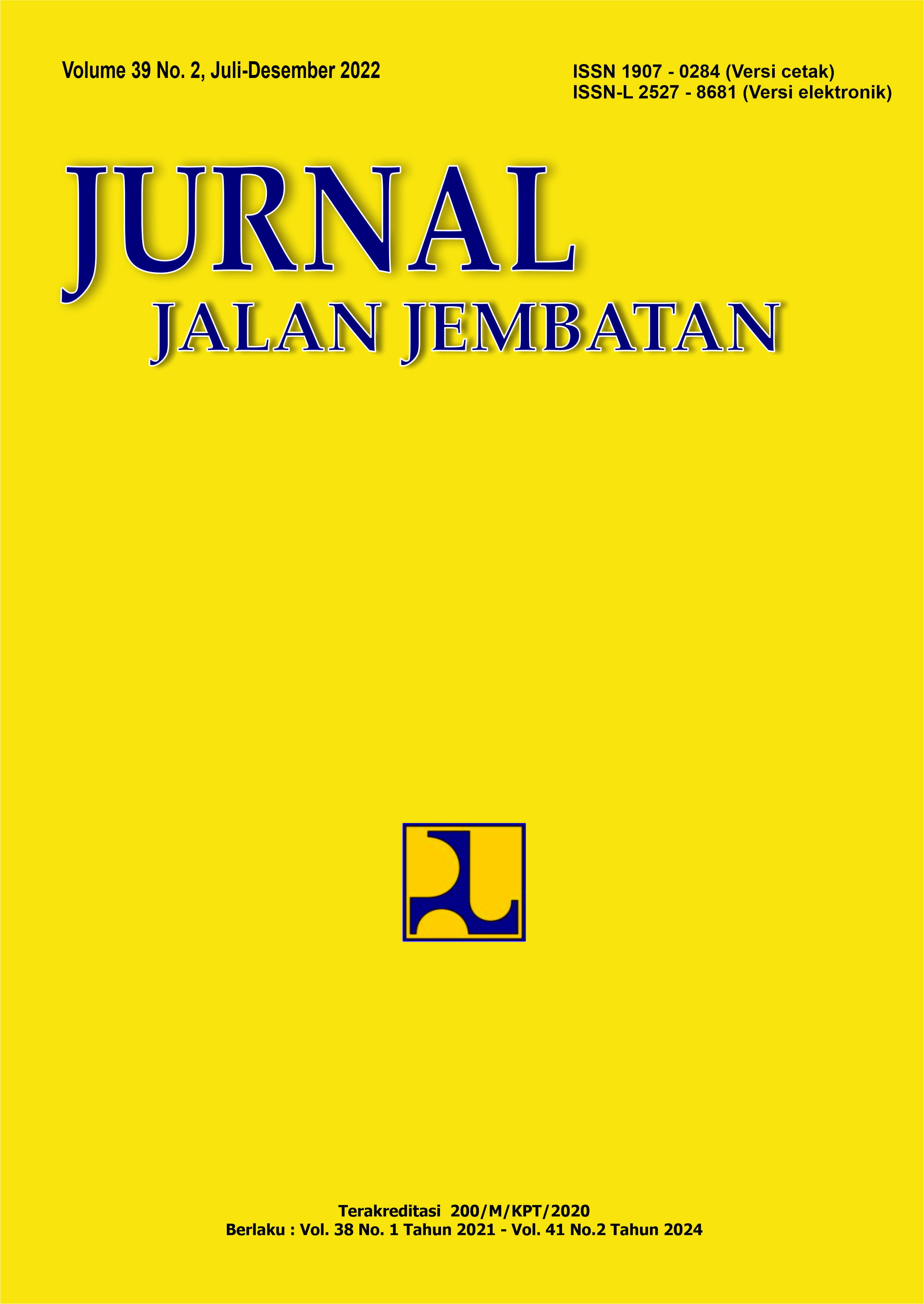LIFE CYCLE ASSESSMENT OF NATIONAL ROAD WITH RECLAIMED ASPHALT PAVEMENT IN WEST JAVA PROVINCE
Main Article Content
Abstract
In order to achieve sustainable development and offset the high demand for improving the quality of roads as one of the socio-economic infrastructures, an optimal strategy is required. The use of Reclaimed Asphalt Pavement (RAP) has been developed as an effort to minimize aggregate waste due to asphalt pavement production. This study aims to estimate the cradle to gate asphalt road life cycle impact through Life Cycle Assessment (LCA) with OpenLCA software and Recipe 2016 Midpoint (H) method, to compare the impact between asphalt with natural aggregate and asphalt contain 50% RAP, and to analyze the components of activities that contribute the most to the impact. The case study is rehabilitation project of national asphalt roads in West Java Province with 1 km asphalt road functional unit. The result shows that the use of 50% RAP levels can reduce the impact of global warming (GWP) of 1,05 ton CO2 eq, fossil resource scarcity (FRS) of 19,60 ton oil eq, human carcinogenic toxicity (HCT) of 0,25 ton 1,4-DCB, and human non-carcinogenic toxicity (HnCT) of 1,79 ton 1,4-DCB compared to asphalt without RAP, while the impact of fine particle formation on asphalt with 50% RAP is 0,02 ton PM2,5 eq higher than asphalt without RAP. Diesel is the main activity that contributes the largest emissions to most impacts, and fuel efficiency efforts can reduce the overall impact.
Article Details
Authors who publish in this journal agree to the following terms:
-
Authors retain copyright and grant the journal the right of first publication with the work simultaneously licensed under a Creative Commons Attribution License, which allows others to share the work with acknowledgment of the work's authorship and initial publication in this journal.
-
Authors may enter into additional contractual arrangements for the non-exclusive distribution of the journal's published version of the work (e.g., post it to an institutional repository or publish it in a book), with acknowledgment of its initial publication in this journal.
-
Authors are permitted and encouraged to post their work online (e.g., in institutional repositories or on their website) as it can lead to productive exchanges, as well as earlier and greater citation of the published work.
Each submitted manuscript must be accompanied by a "Manuscript Originality Statement" and a "Copyright Transfer Statement".

